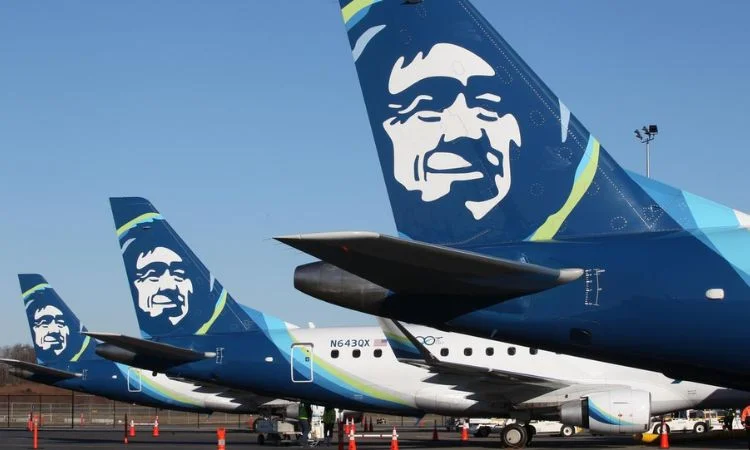Following an incident in midair where a window and a portion of the fuselage broke off, causing cabin depressurization, Alaska Airlines has grounded all Boeing 737-9 MAX aircraft. While traveling to Ontario, California, Flight 1282 had an emergency landing in Portland. The airline has not disclosed any information regarding the cause or injuries. Investigations are being carried out by the Federal Aviation Administration (FAA) and the National Transportation Safety Board (NTSB). Two months after certification, the Boeing 737-9 MAX has come under investigation for prior crashes and production defects.

All Boeing 737-9 flights have been grounded by Alaska Airlines due to a serious in-flight emergency. After a concerning event in which a glass and a portion of the fuselage on one of their planes blew out midair and required an emergency landing in Portland, Oregon, the decision was made late on Friday.
The jet reached an altitude of 16,000 feet (4,876 meters) before the crew was forced to make an emergency descent back to Portland International Airport. The incident occurred shortly after Flight 1282 took off.
The huge breach caused the cabin to suddenly deflate, which prompted the flight crew to act quickly to protect the passengers.
According to the airline, the plane, which was carrying 174 passengers and 6 staff members, made a safe landing.
Regarding if anyone was hurt and what might have happened, the airline did not immediately provide details.
According to Times of India, Alaska Airlines CEO Ben Minicucci made a bold announcement to ground the airline’s Boeing 737-9 fleet. “Following tonight’s event on Flight 1282, we have decided to take the precautionary step of temporarily grounding our fleet of 65 Boeing 737-9 aircraft,” Minicucci stated.
To ascertain the reason behind the fuselage failure, in-depth examinations are anticipated to be carried out by the Federal Aviation Administration (FAA) and the National Transportation Safety Board (NTSB).
The MAX series, which includes the Boeing 737-9, did not resume flight until after undergoing significant safety inspections and upgrades. The safety of the series is called into doubt by this most recent occurrence, which may have wider ramifications for the aviation sector.
The aircraft was diverted back to Portland barely six minutes after departure at 5:07 p.m., and it made a safe landing at 5:26 p.m., according to flight tracking service FlightAware.
It was also stated that the pilot reported an emergency with depressurization and that they had to get back to the airport right away.
KATU-TV in Portland received disturbing photos and videos from passengers on the trip, including shots of people wearing oxygen masks during the journey and a large hole close to passenger seats. The footage also showed the passengers’ jubilant reaction upon the successful landing.
To validate their investigation into the incident, the National Transportation Safety Board (NTSB) has taken to X.
The Federal Aviation Administration (FAA) declared as well that it will carry out a comprehensive investigation.
According to FAA data, the aircraft in question, a Boeing 737-9 MAX, was approved just two months ago, making it a very recent addition to the fleet. According to FlightRadar24, the aircraft had made 145 flights since it began operating in commercial service on November 11 and had already made two flights the day before the incident.
In response to the incident, Boeing has said that it is aware of the circumstances and is prepared to help with the inquiry. Following two deadly incidents in 2018 and 2019, which resulted in the grounding of the Max 8 and Max 9 models for almost two years, the Boeing 737 MAX series, in particular the Max 8 model, has come under investigation. Prior to the aircraft being put back into service, the automatic flight control system underwent modifications.
Concerns about the Max series have been brought up recently by the FAA, which has issued cautions limiting the use of anti-ice systems in dry weather because of the risk of overheating. Boeing has also corrected a number of production defects, such as a December mandate to test the rudder-control system for a potential loose bolt.















